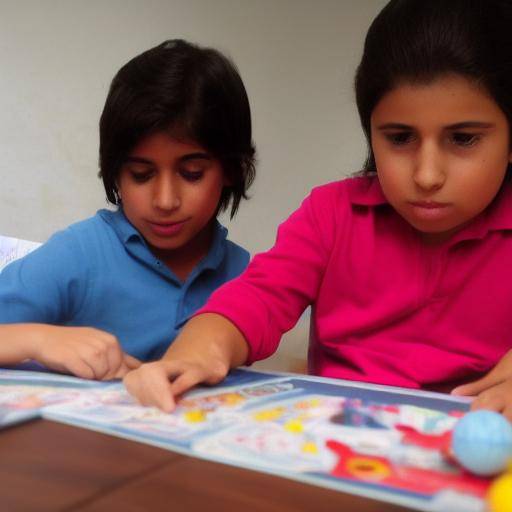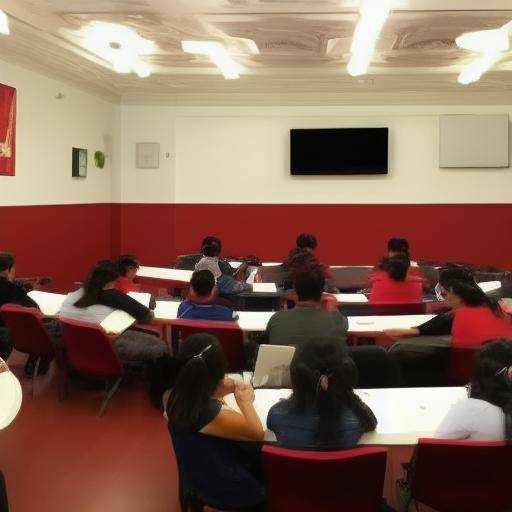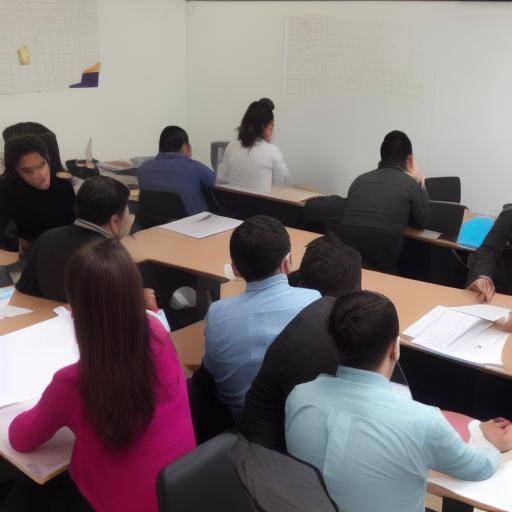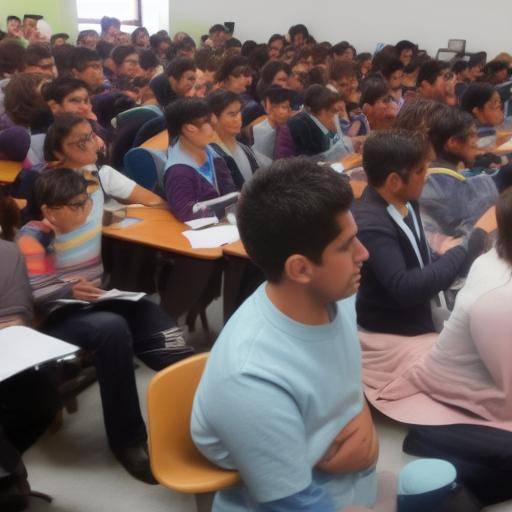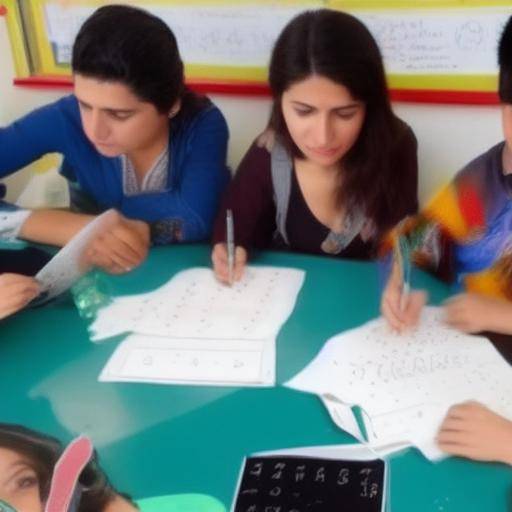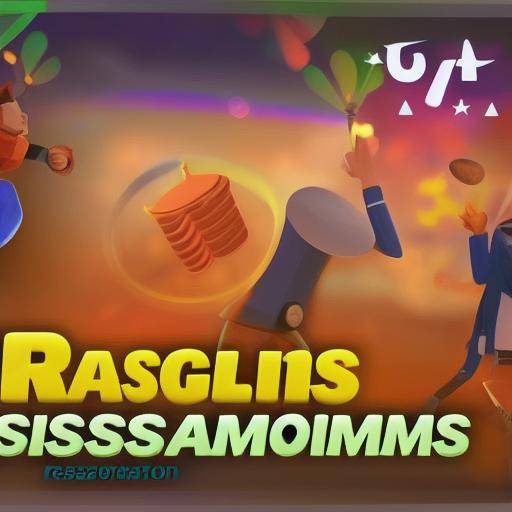
Introduction
The teaching of problem-solving has now become a key aspect in the educational development of children, adolescents and adults. The integration of effective strategies to teach this important concept has become relevant in the educational field. In this article, we will explore the importance of using games as a tool to teach troubleshooting, as well as providing practical and applicable strategies to achieve this goal effectively.
History and Background
The teaching of problem solving has been an essential component in the cognitive development of people throughout history. From ancient civilizations to today, the ability to solve problems has been crucial to human progress and adaptation. In the field of education, approaches and methodologies to teach this skill have evolved significantly, from traditional methods to more dynamic and participatory strategies.
Origins and Evolution
The concept of teaching problem solving goes back to ancient civilizations, where the ability to find creative solutions was vital to survival. Throughout history, prominent figures in education have advocated the importance of developing skills to solve problems, laying the foundations for modern pedagogical approaches.
Significant developments
With the advent of educational psychology and the focus on the development of cognitive skills, the teaching of problem solving has become increasingly relevant in educational programs. The integration of this skill into the school curriculum has been supported by research that demonstrates its positive impact on the intellectual and emotional development of students.
Anecdotes and Case Studies
The use of innovative strategies to teach problem solving through games has shown promising results in educational settings around the world. Detailed case studies reveal how the integration of games has stimulated critical thinking, collaboration and creativity in participants, strengthening their ability to effectively address challenges.
Deep analysis
Teaching troubleshooting through games presents a number of significant benefits for students, as well as challenges that need to be addressed strategically.
Benefits
- Cognitive stimulation: Games offer structured scenarios that challenge participants to think analytically and creatively, promoting the development of skills to solve problems.
- Active participation: The playful nature of games promotes active participation and commitment to the challenges posed, which contributes to meaningful learning.
- Social development: Group games encourage collaboration, teamwork and effective communication, key aspects in problem solving.
Challenges
- Appropriate Design of Games: A careful approach is required in the design of educational games that address specific challenges, ensuring that they are relevant and effective in teaching problem solving.
- Evaluation and Feedback: Measuring progress in acquiring problem solving skills through games poses challenges in terms of objective evaluation and significant feedback.
Current trends
Currently, the integration of educational technology and gamification have led to a wide range of innovative tools and platforms designed to teach problem solving through games. These trends reflect a dynamic and adaptive approach to teaching, taking advantage of the power of the game to enrich the learning experience.
Comprehensive review
Effective implementation of strategies to teach problem solving through games requires a comprehensive approach that encompasses various aspects, including exploring best practices, case studies and future projections in the field of education.
Applications and Best Practices
The implementation of games to teach problem solving has proven to be effective in a variety of educational environments, from primary schools to vocational training environments. Specific examples of successful programs and methodologies provide valuable insights on how to adapt teaching strategies to the specific needs of students.
Perspectives of Experts and Future Projections
Educational pedagogy and psychology experts offer fundamental perspectives on integrating strategies to teach problem solving through games. Their informed opinions and future projections provide insight and guidance on emerging trends and the potential impact on the evolution of teaching.
Comparative analysis
The comparison and contrast of different approaches to teaching problem solving through games provides a deeper understanding of the most effective strategies and key considerations to optimize the learning process.
Similarities and Variances
By comparing teaching strategies, it is possible to identify fundamental similarities in the approaches used, as well as significant differences that influence learning effectiveness and experience. This analysis makes it possible to highlight best practices and avoid potential challenges when implementing specific strategies.
Examples and Scenarios
The presentation of concrete examples and relevant scenarios emphasizes the applicability and impact of different strategies to teach problem solving through games. By examining how these strategies are applied in specific educational contexts, a deeper understanding of their effectiveness and relevance is obtained.
Practical Tips and Accessible Recommendations
In order to provide tangible value, it is essential to provide practical advice and actionable recommendations for educators, parents and professionals interested in implementing effective strategies to teach problem solving through games.
Key Guidelines
- Selection of Appropriate Games: Identify games that challenge participants constructively, fostering critical thinking and problem solving.
- Create a Support Environment: Establish an environment that fosters experimentation, learning from failure and collaboration among participants.
Step by Step Guides
- Provide a detailed guide on how to integrate games into the process of teaching problem solving, highlighting specific steps to design and facilitate effective educational activities.
Details
- To provide clear and detailed explanations on the implementation of specific strategies, supported by evidence and concrete examples, in order to provide practical guidance and theoretical support.
Perceptions of Industry and Expert Reviews
The perceptions of the educational industry and the opinions of teaching experts offer a insightful insight into the impact and evolution of strategies to teach problem solving through games.
Future Implications
The analysis of emerging trends and innovations in education provides an up-to-date perspective on the future of game integration in the educational process, as well as the opportunities and challenges that these trends present.
Interviews and Expert Quotes
Presenting testimonies of outstanding educators, experts in educational psychology and professionals of child development enriches the reader's perspective, adding credibility and relevance to the discussed strategies.
Case Studies and Practical Applications
The inclusion of detailed case studies and practical applications provides concrete examples of the real impact of strategies to teach problem solving through games.
Results and Lessons Learned
In presenting case studies, the results and lessons learned from the implementation of specific strategies will be analyzed, offering a practical vision of their effectiveness and applicability in real educational environments.
Varied examples
Including varied examples of successful gaming applications for problem resolution teaching in different educational contexts provides a diverse view of the potential and possible adaptations of the strategies presented.
Future Trends and Predictions
The analysis of emerging trends related to the teaching of problem resolution through games provides an informed view of the future of this pedagogical approach.
Emerging trends
Identifying and analyzing technological trends and advances that will shape the future of problem solving teaching offers a valuable prospective perspective for educators, game designers and educational development professionals.
Funded predictions
Based on current evidence, expert projections and trend analysis, informed predictions will be presented on the evolution of approaches to teach problem solving through games, as well as their possible implications in educational practice.
Conclusion
Teaching problem solving through games represents a dynamic and effective approach that promotes the integral development of cognitive, emotional and social skills in students. By integrating innovative and practical strategies to teach this skill, educators and educational professionals can foster meaningful and stimulating learning that prepares students to face the challenges of the real world with confidence and creativity.
Frequently asked questions
What benefits do games offer to teach troubleshooting?
Games provide a structured environment that challenges participants to think in an analytical and creative way, promoting the development of skills for problem solving. They also encourage active participation, collaboration and social development.
What are the challenges in teaching troubleshooting through games?
Some challenges include proper design of educational games, assessment of progress in skills acquisition and meaningful feedback.
What are the current trends in teaching problem resolution through games?
Current trends include the integration of educational technology and gamification, which have generated innovative tools and platforms designed to teach problem solving through games.
How to select appropriate games to teach troubleshooting?
It is crucial to identify games that challenge participants in a constructive way, fostering critical thinking and problem solving, as well as creating a support environment that encourages experimentation and collaboration.
What is the relevance of case studies in teaching problem solving through games?
Case studies provide concrete examples of the real impact of strategies to teach problem solving through games, offering practical lessons and applicable examples.
What are future trends in the teaching of problem solving through games?
Future trends include technological advances, adaptations of existing strategies and the exploration of new innovative approaches to the teaching of problem solving through games.
In conclusion, teaching problem solving through games is a dynamic and effective approach that promotes meaningful and stimulating learning. By integrating innovative and practical strategies, educators can prepare students to address challenges with confidence and creativity.












